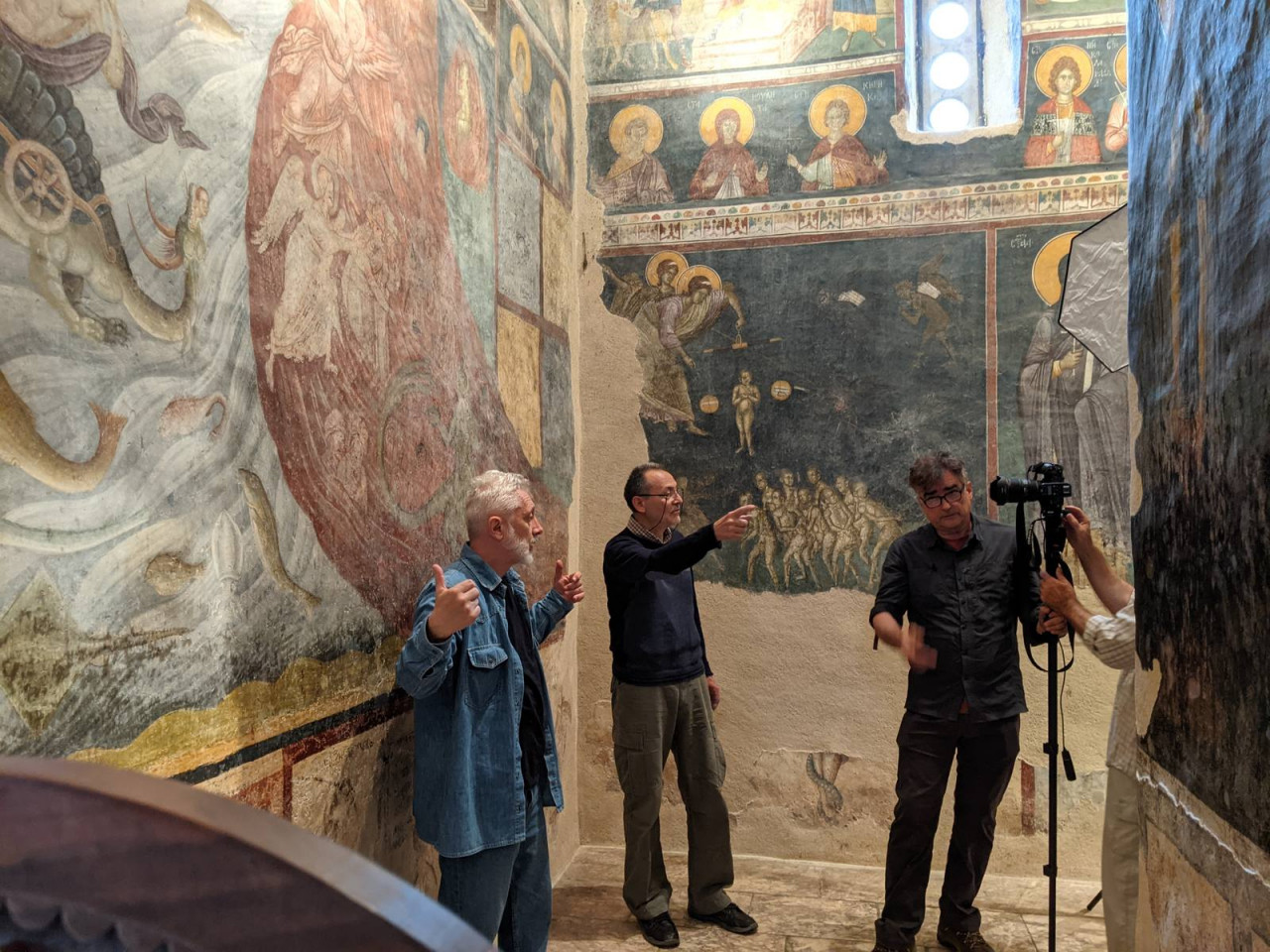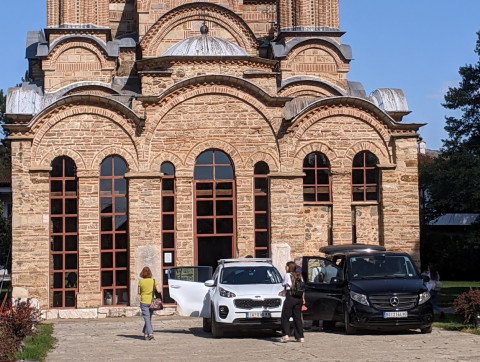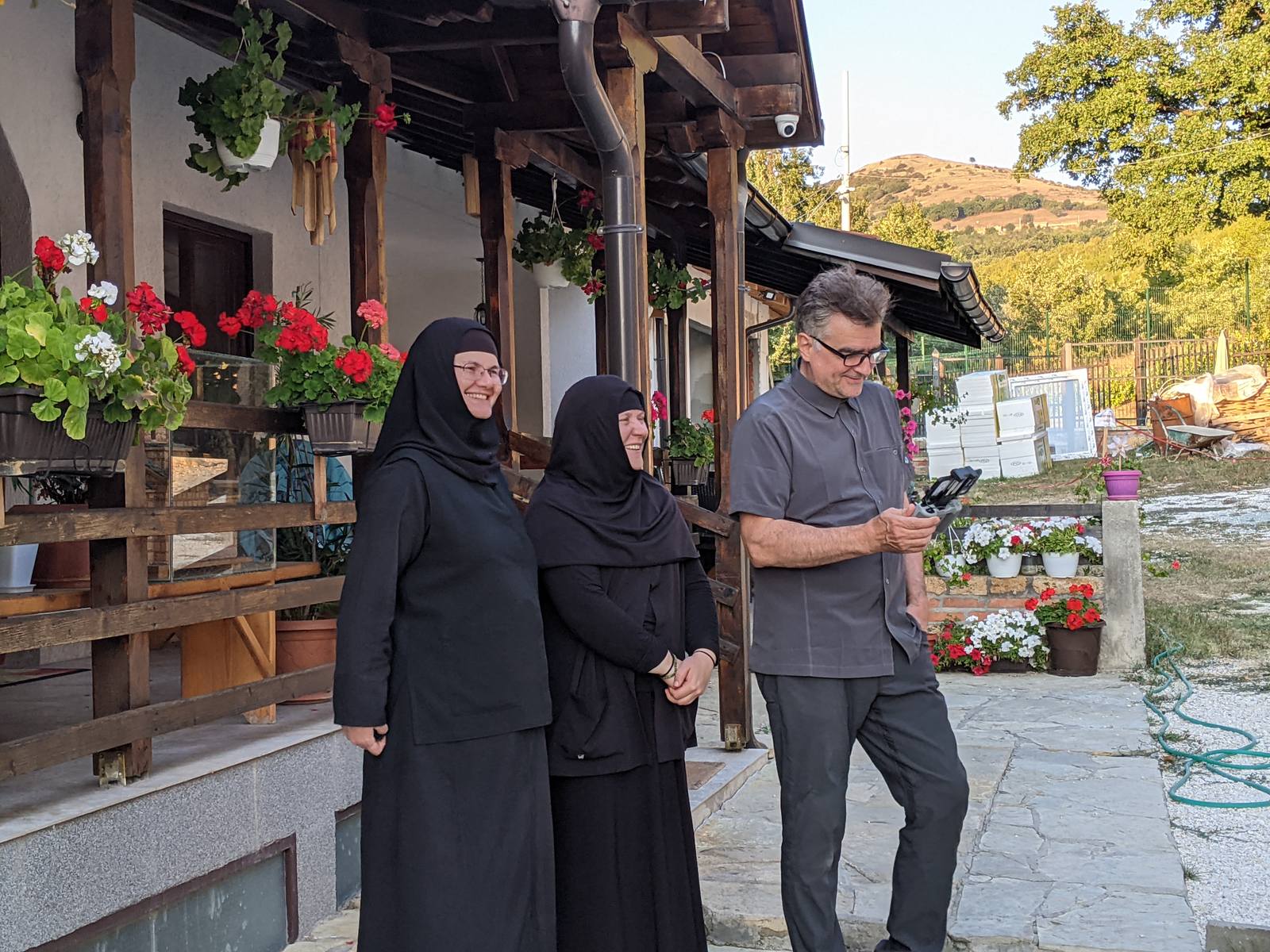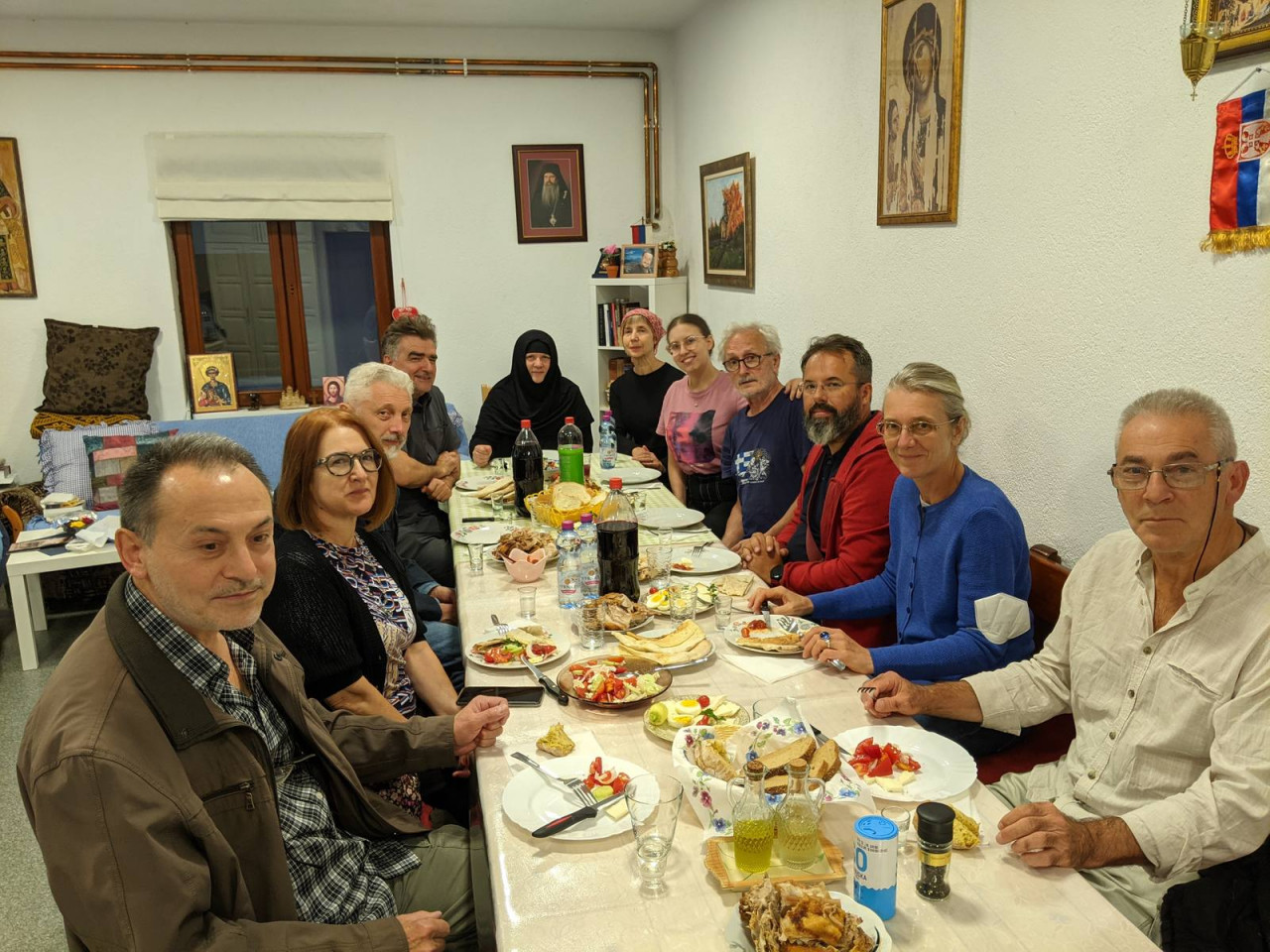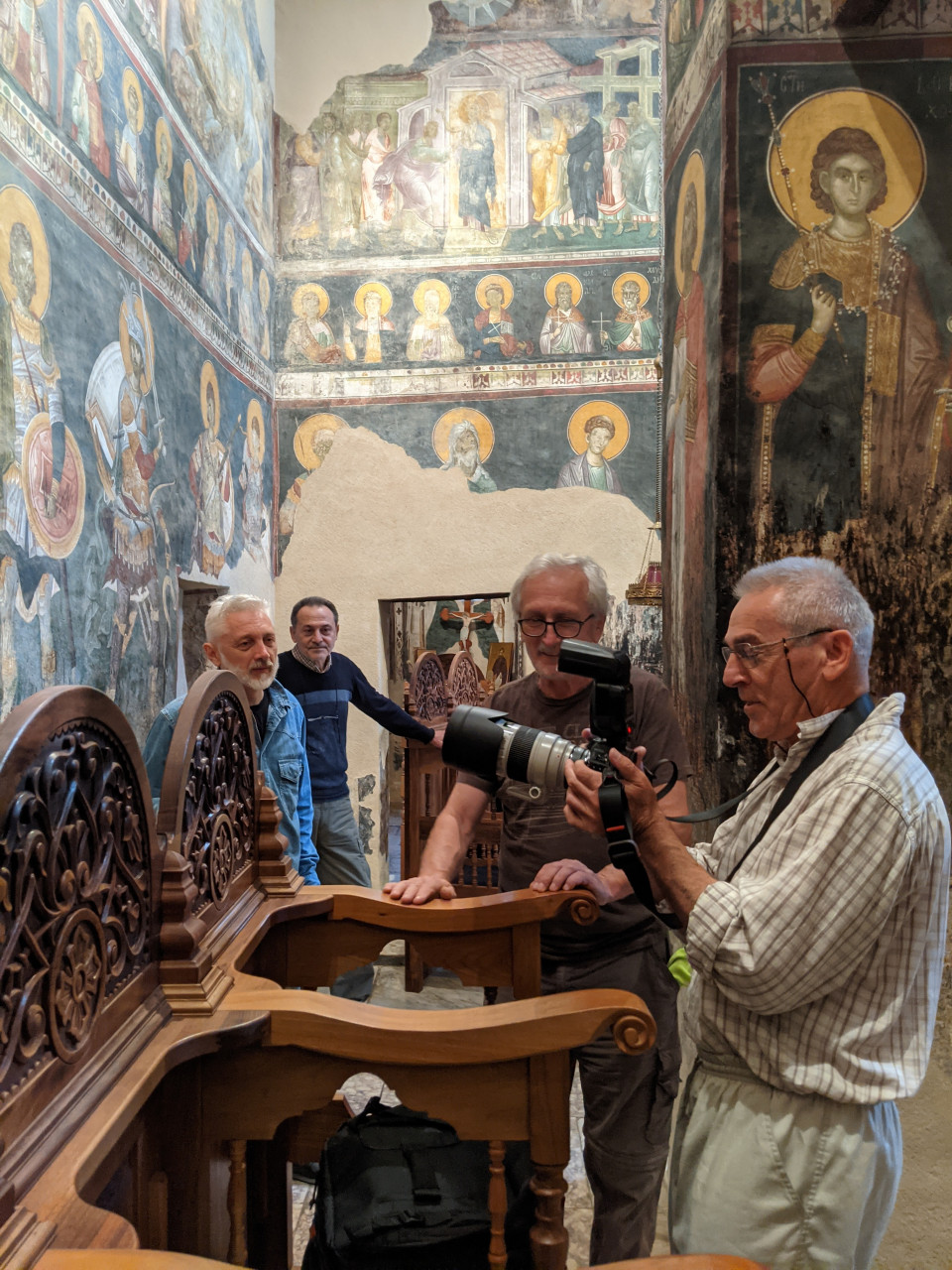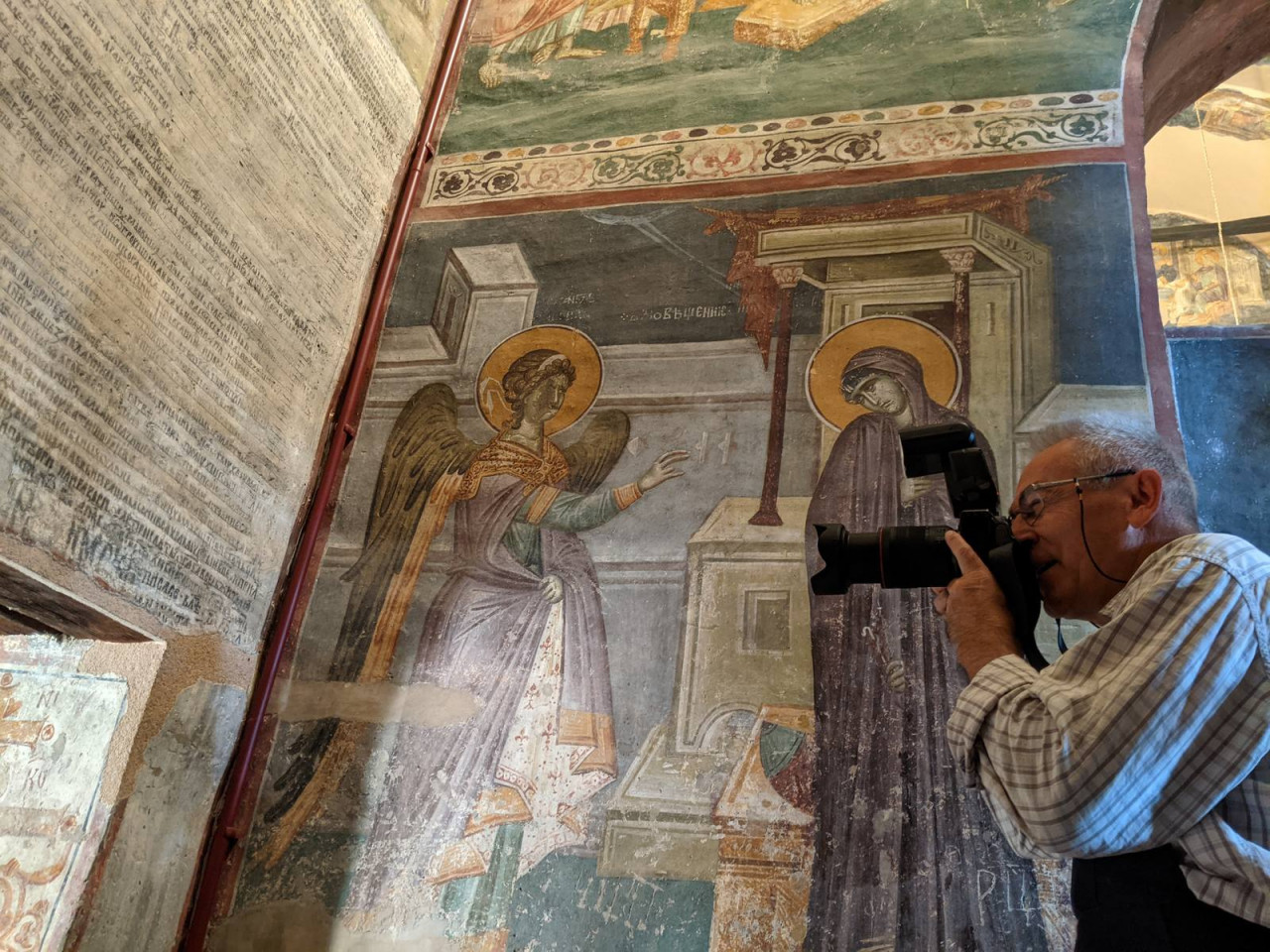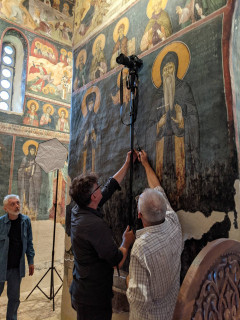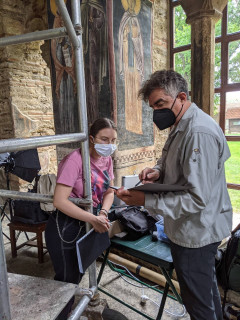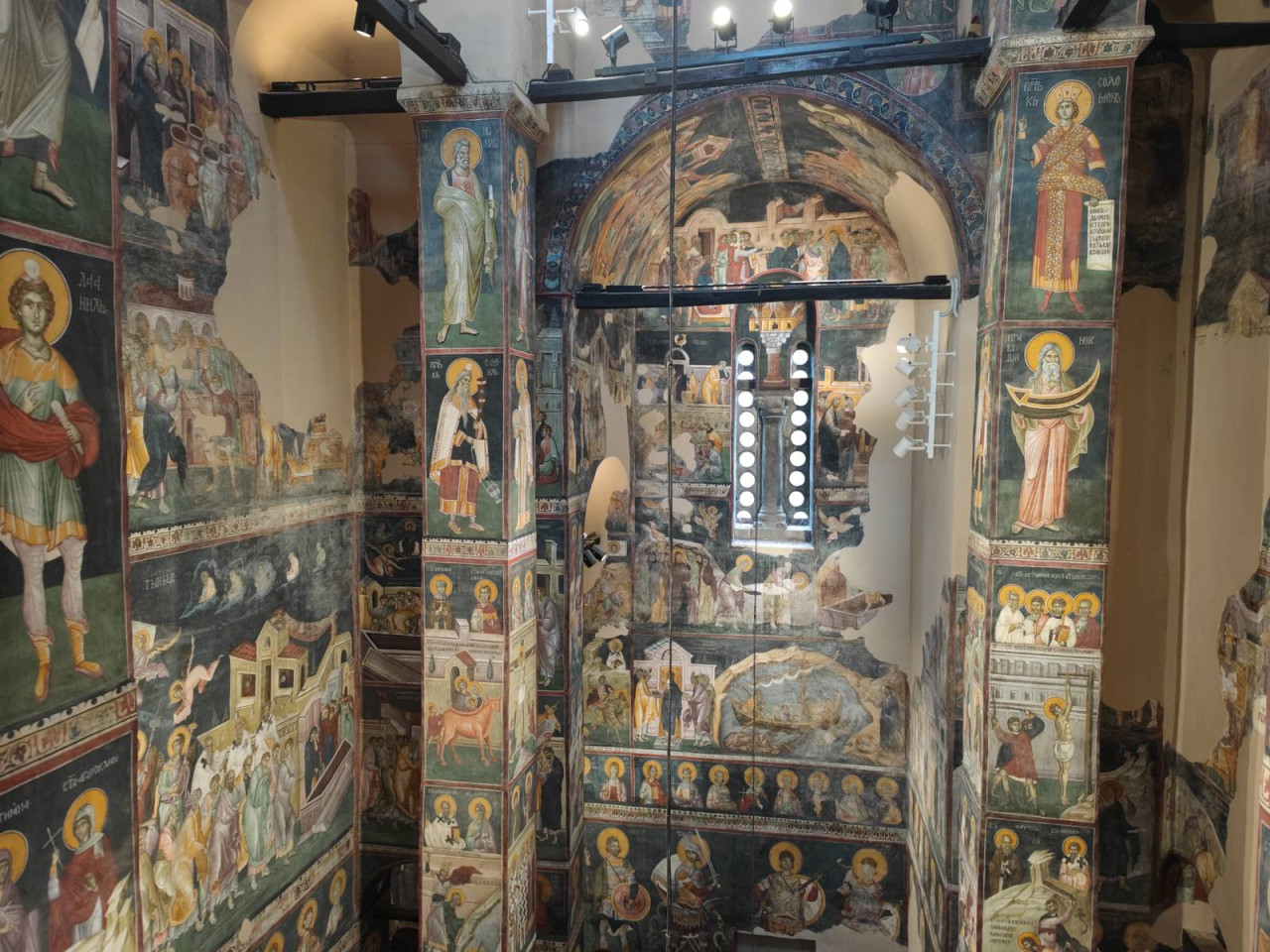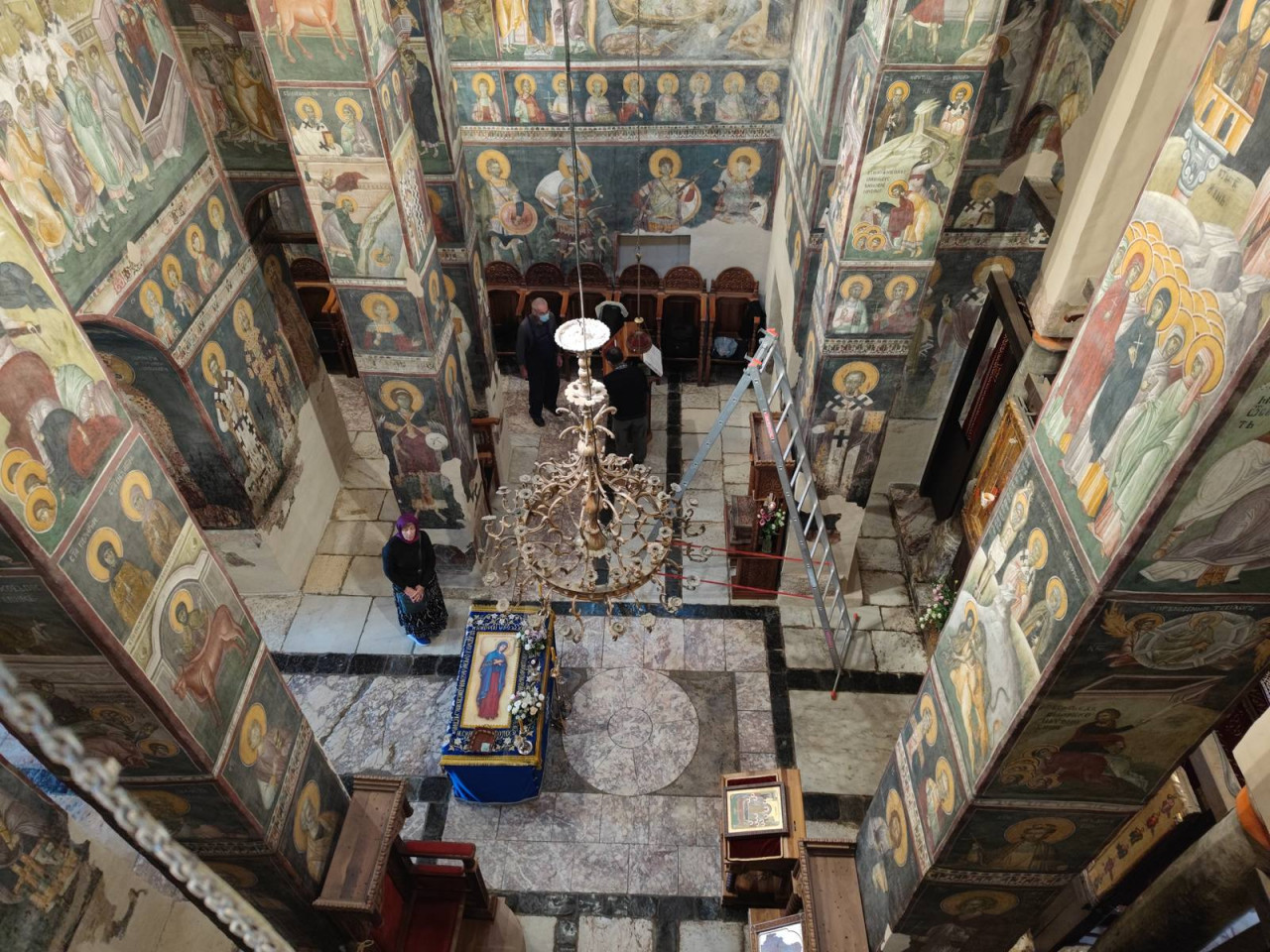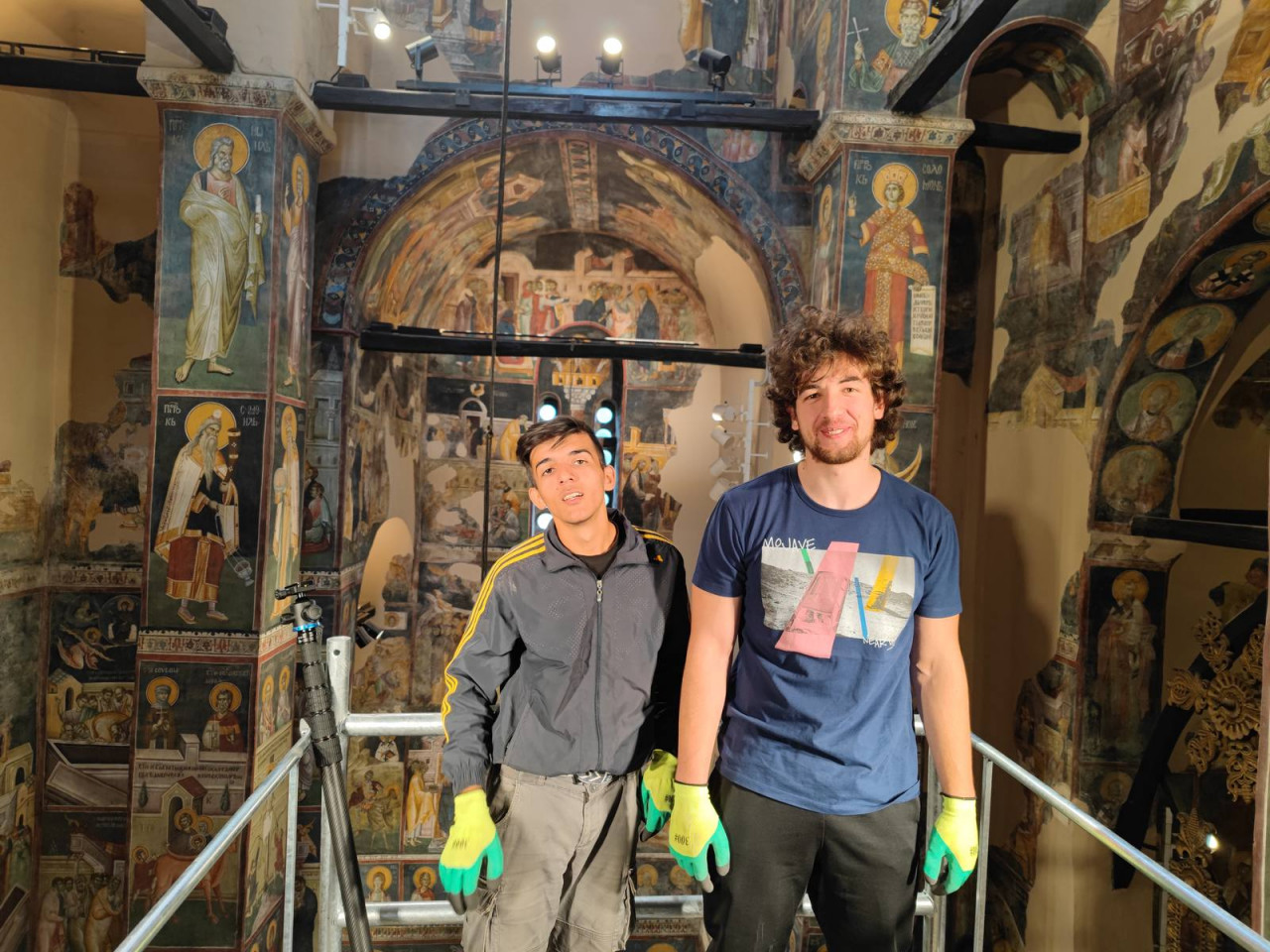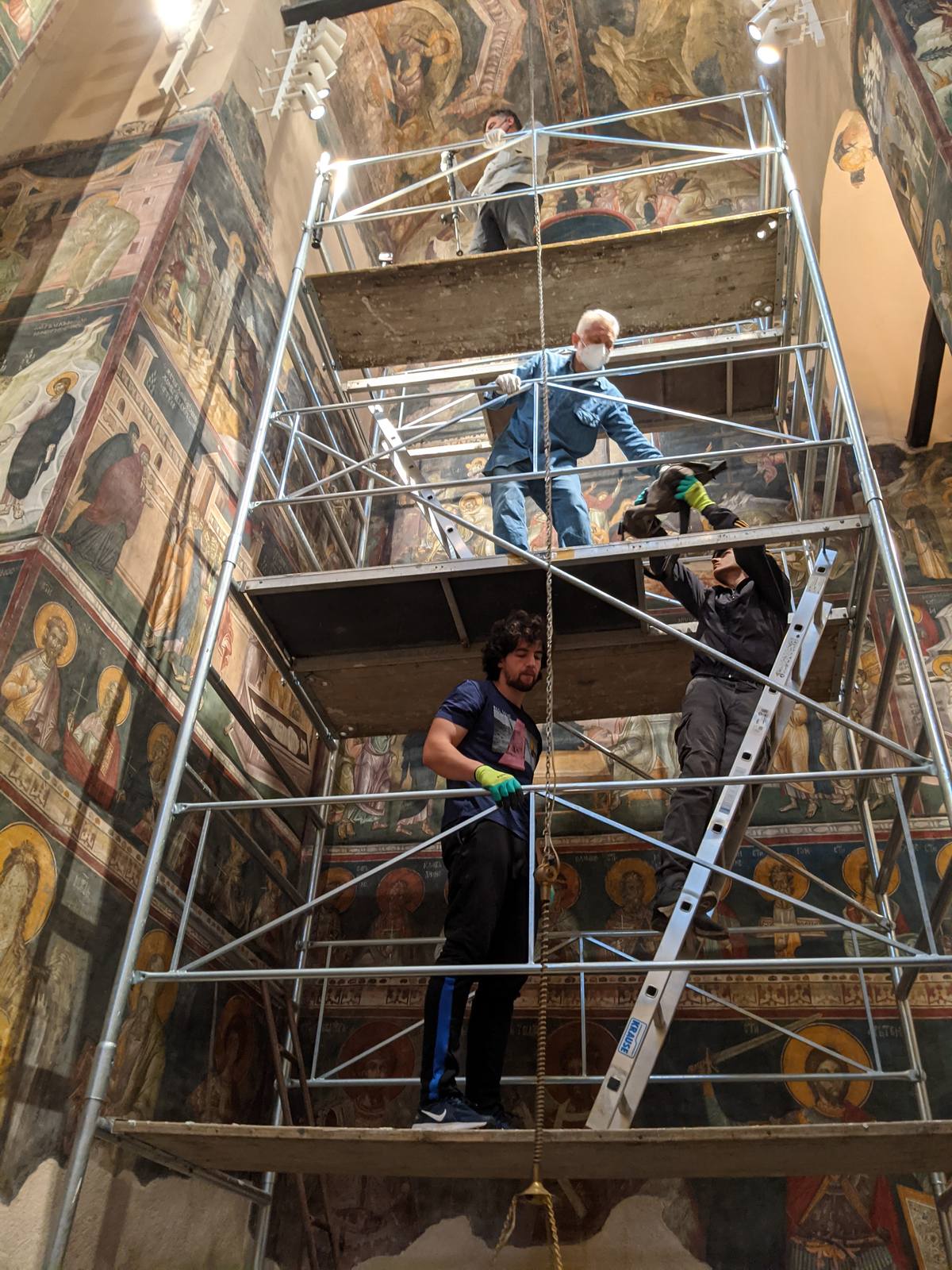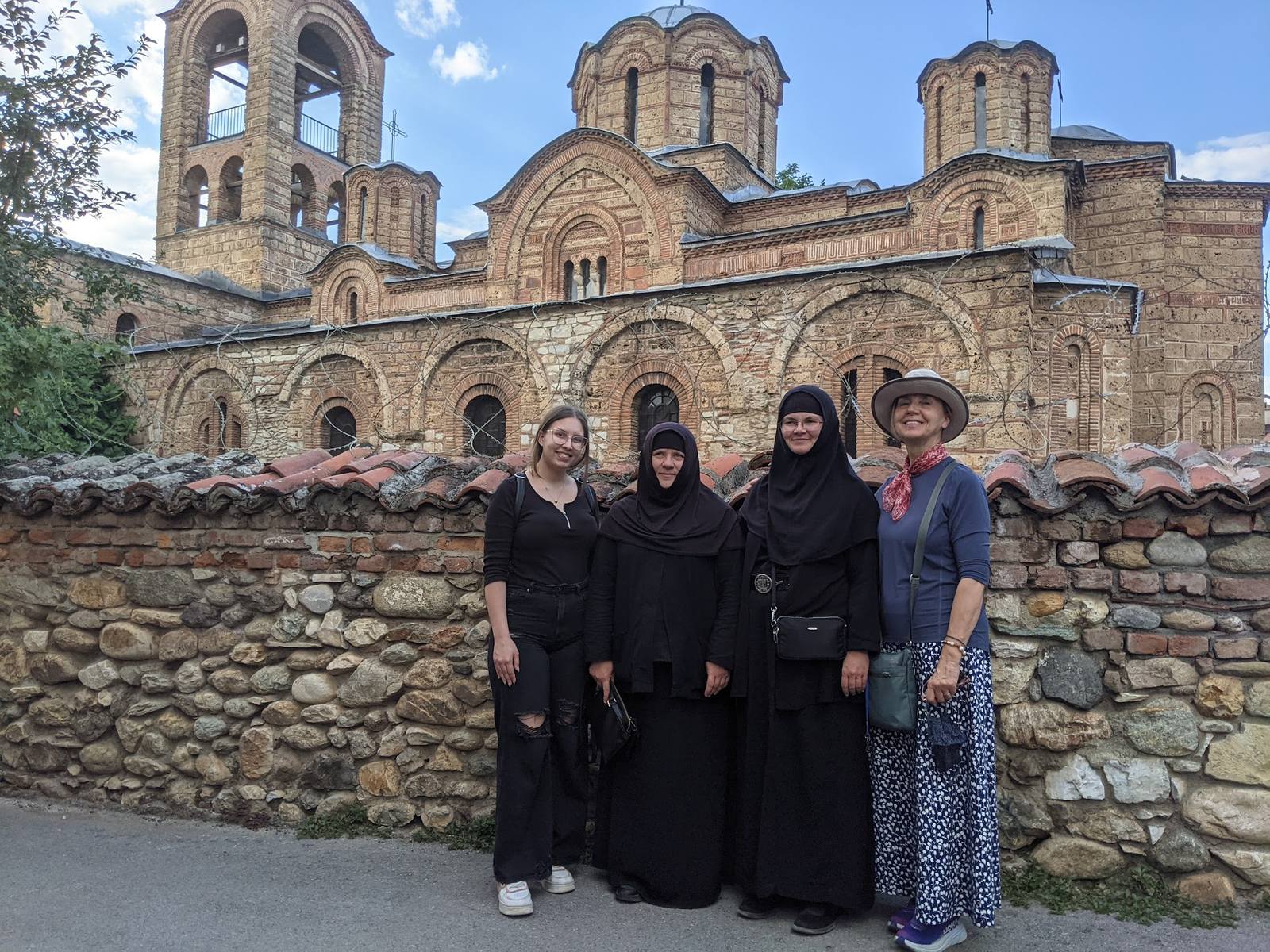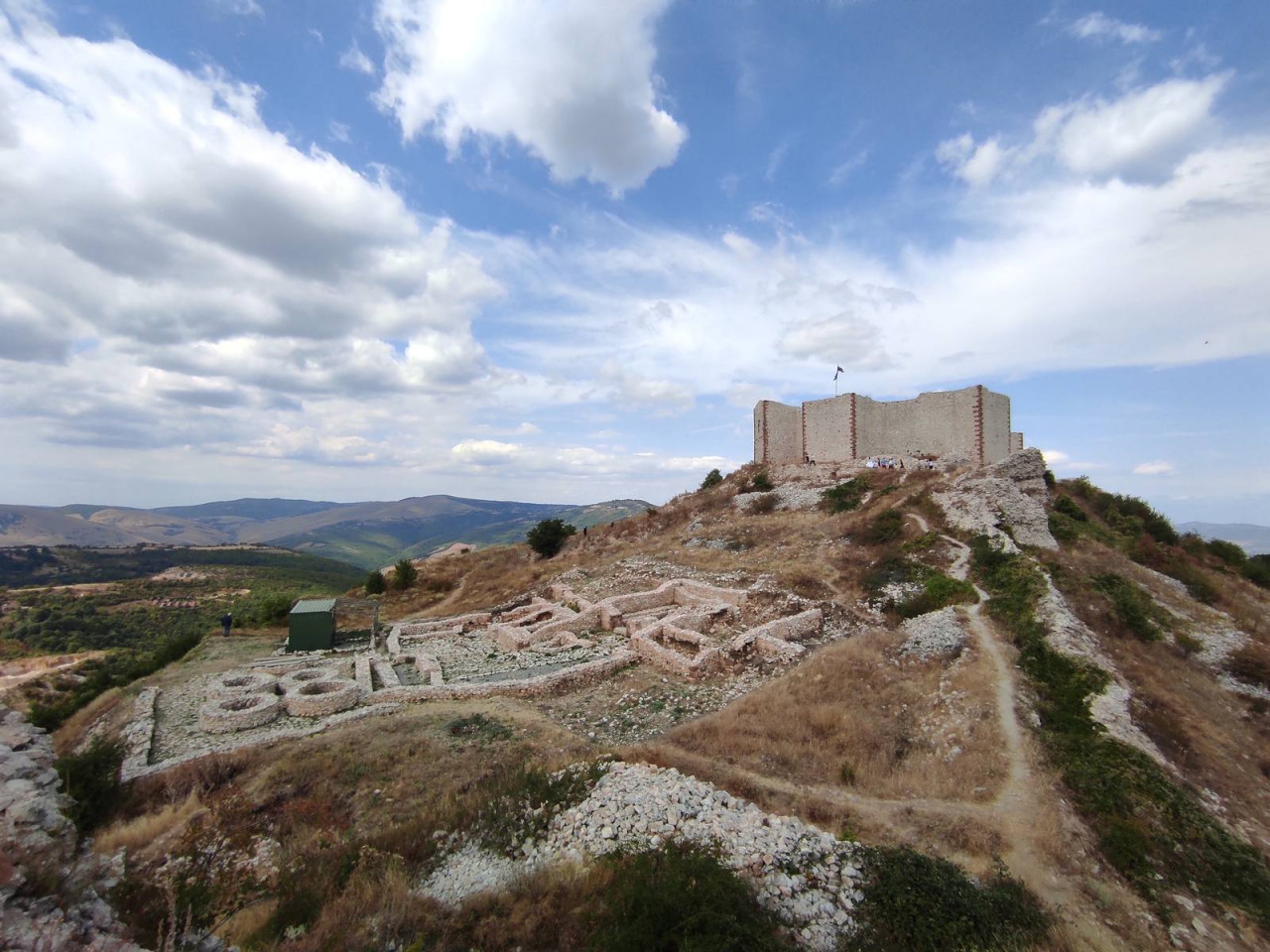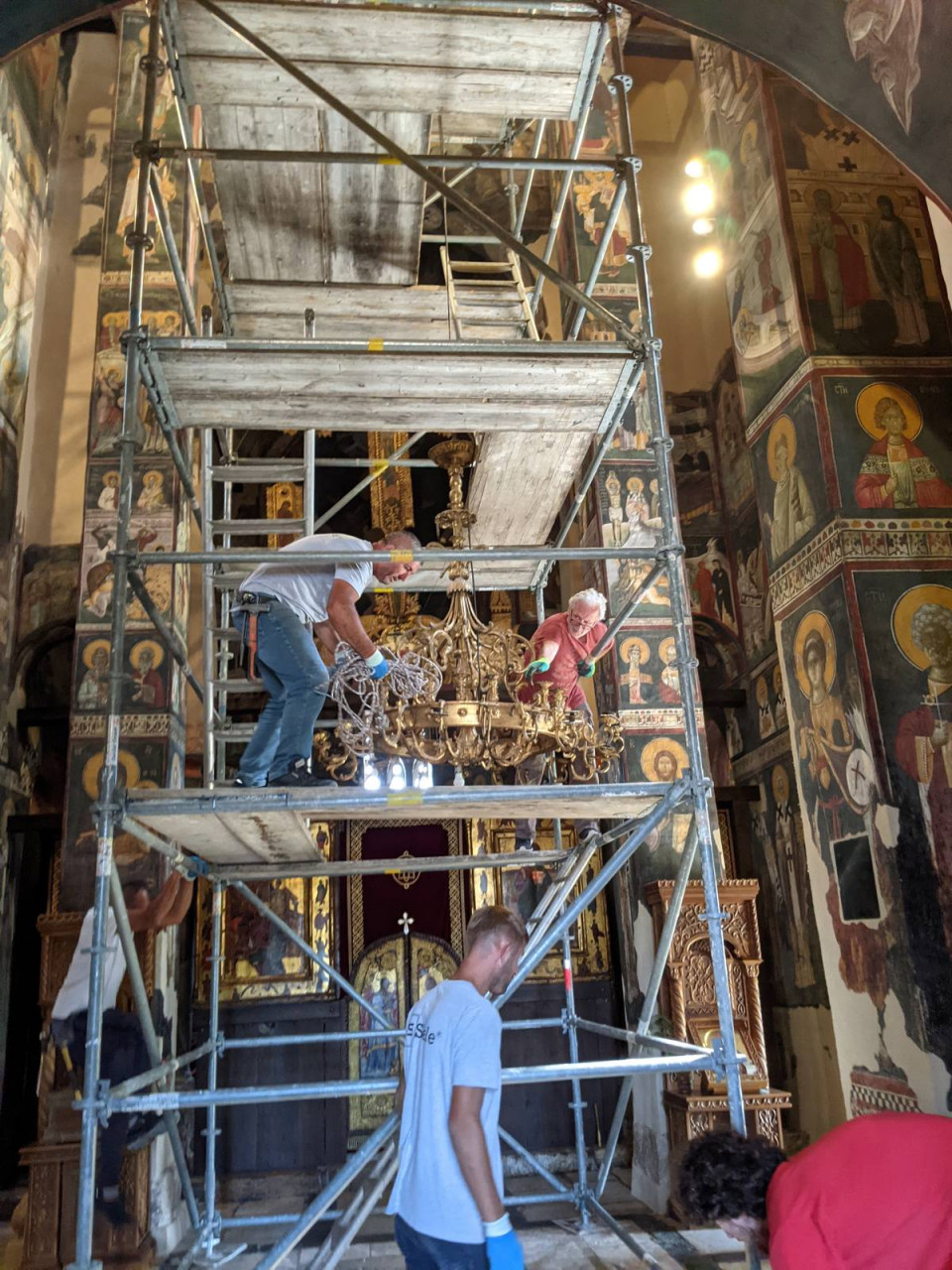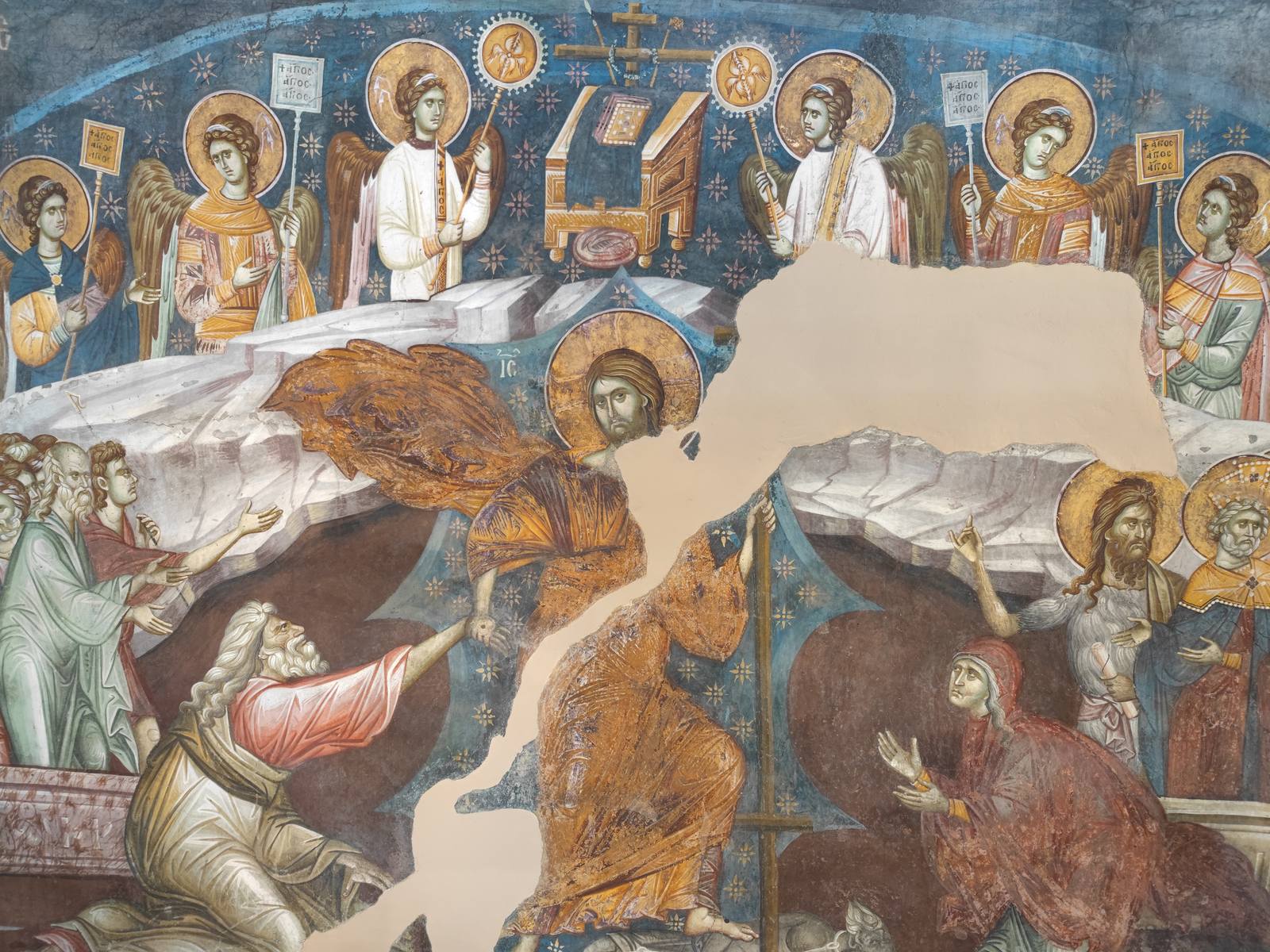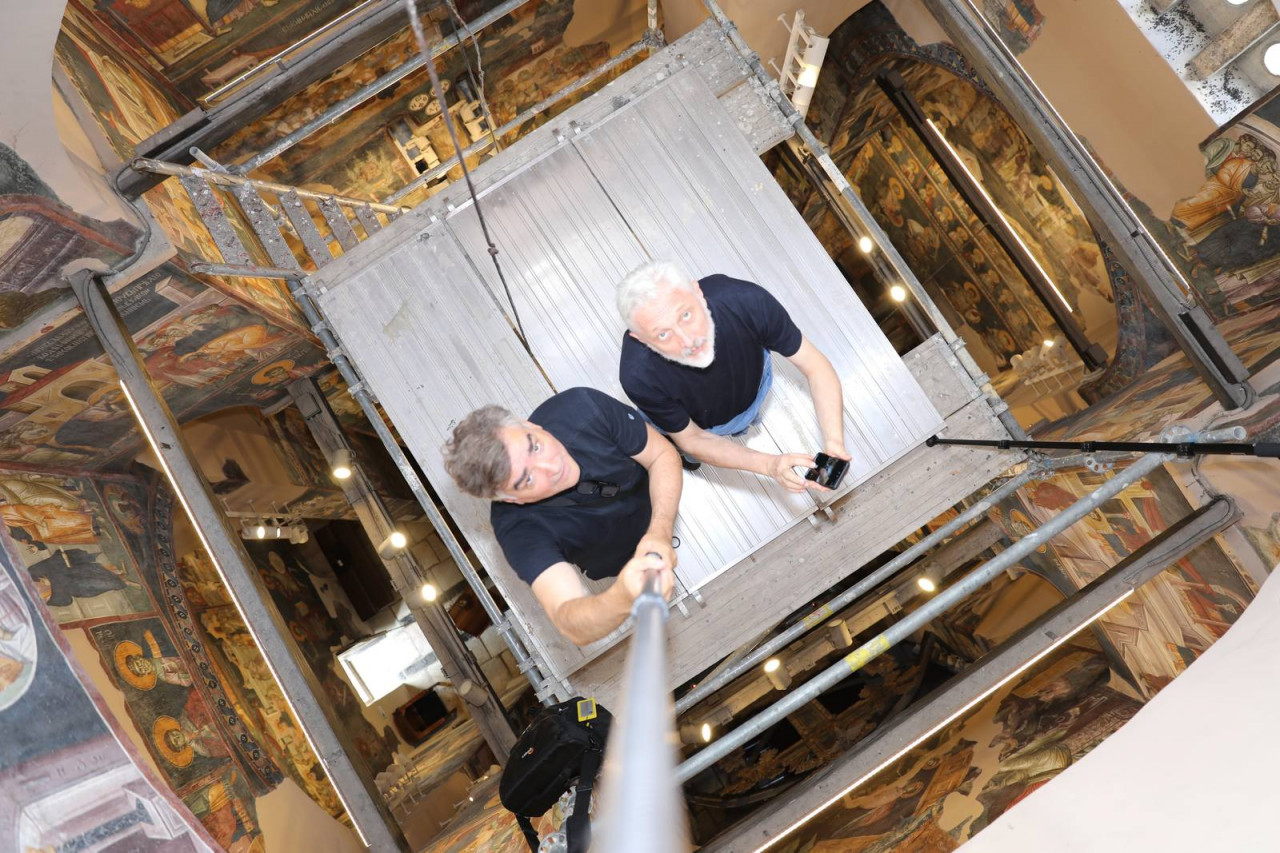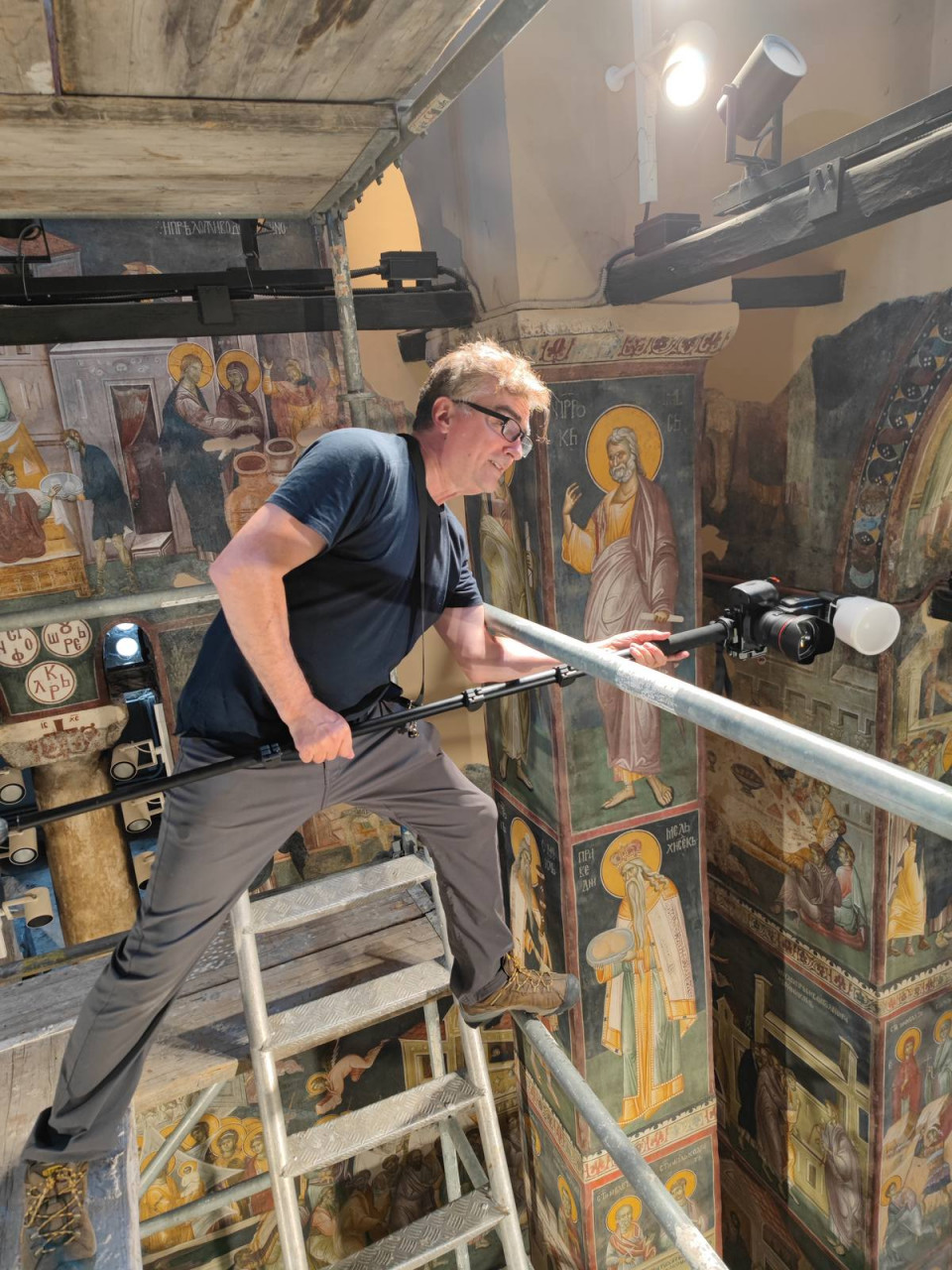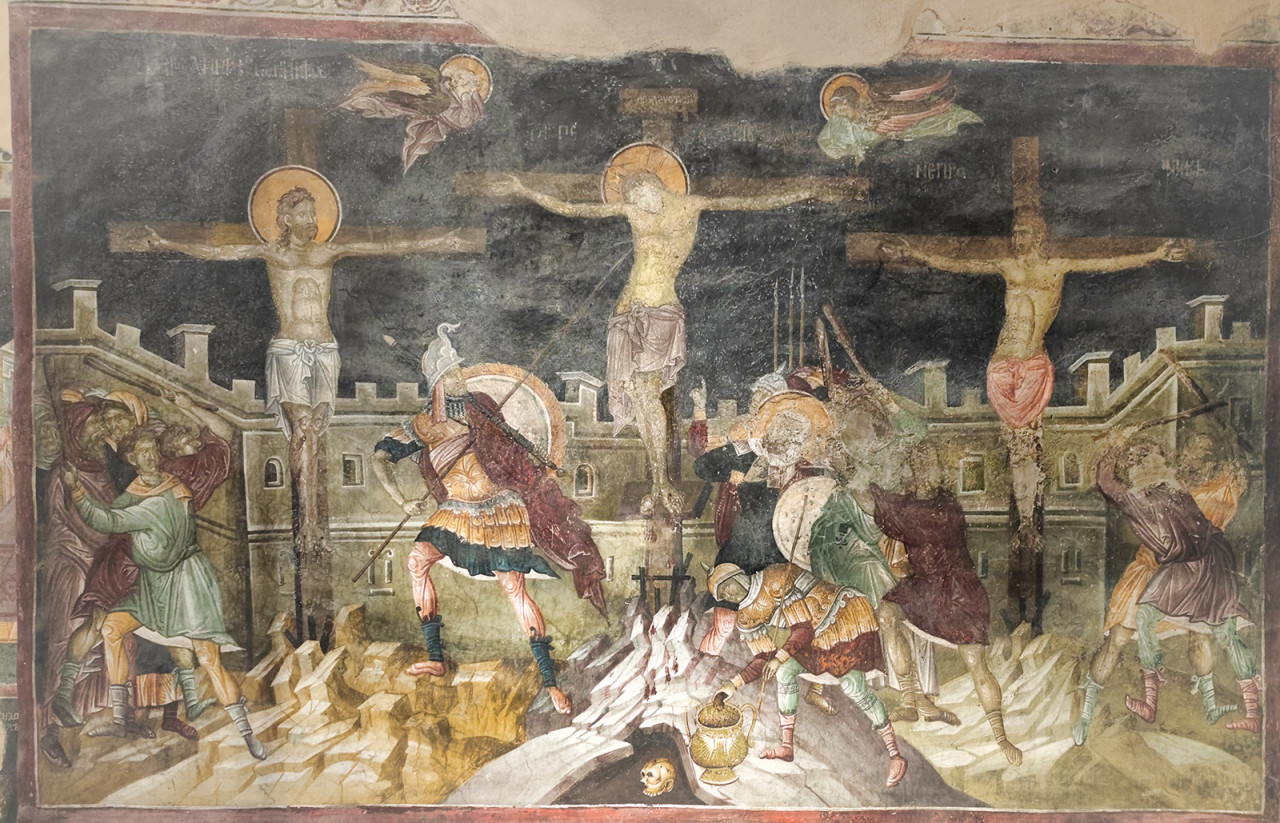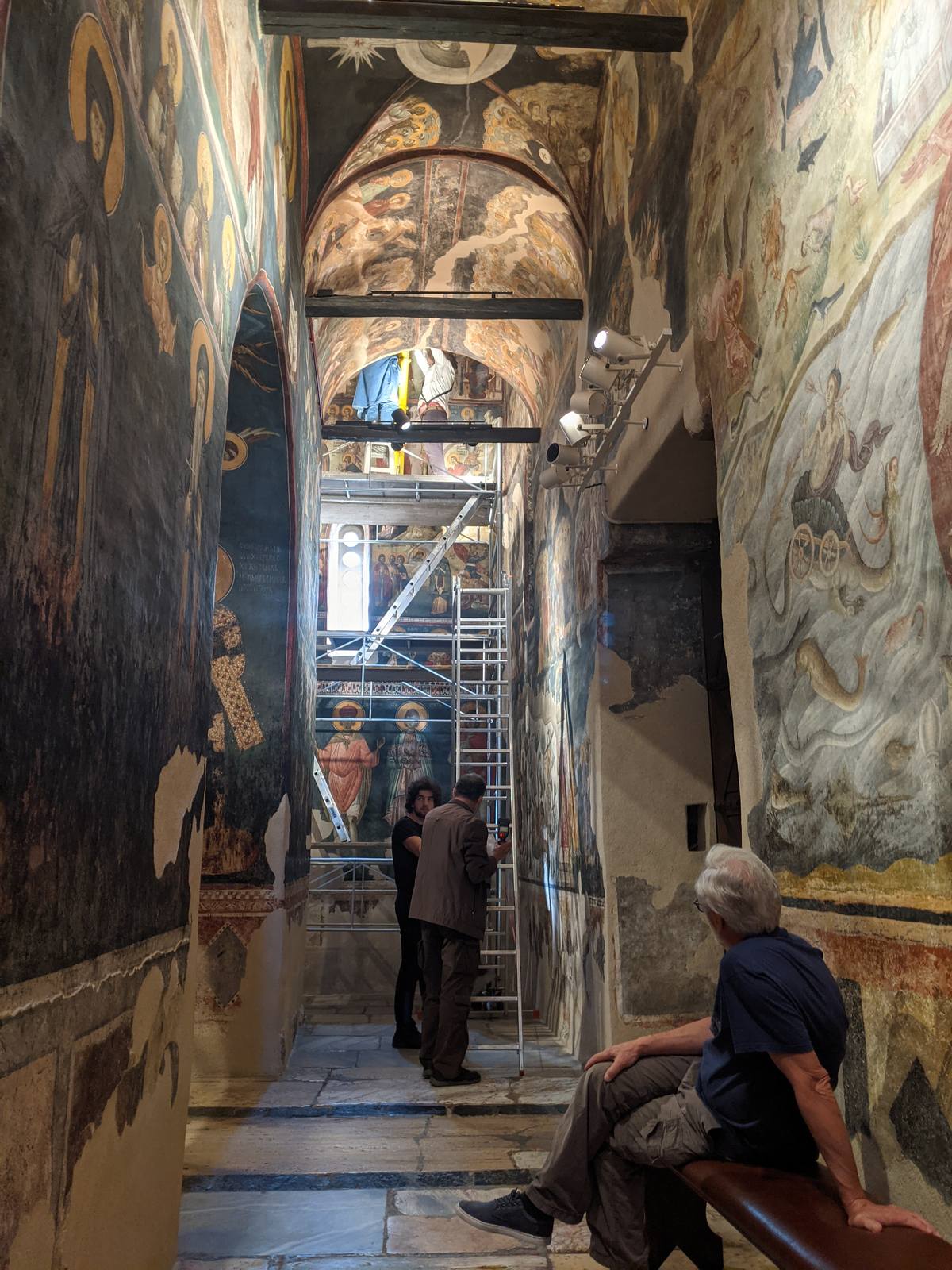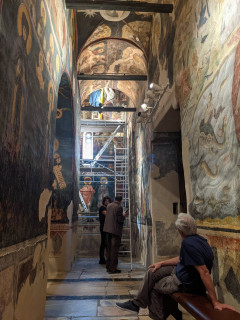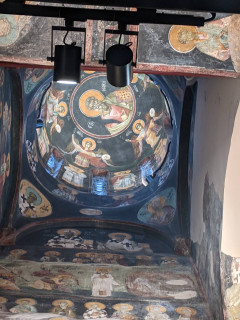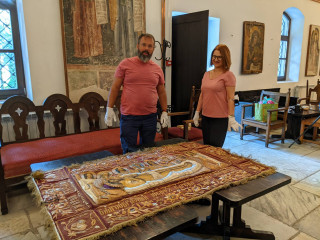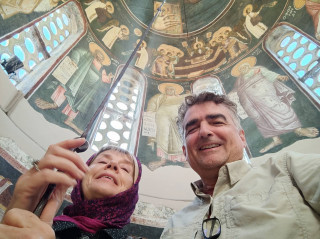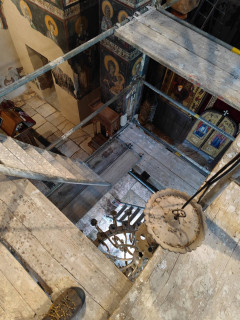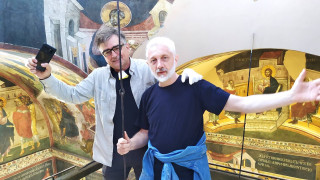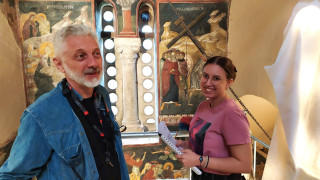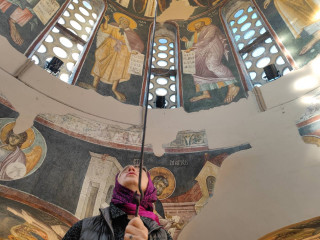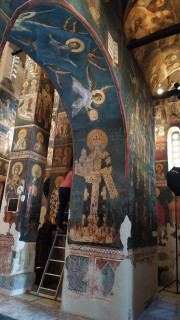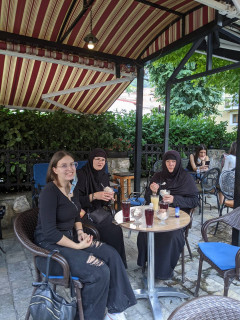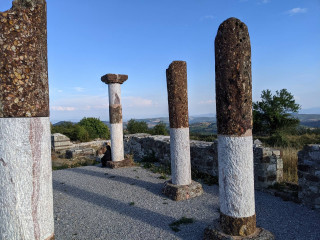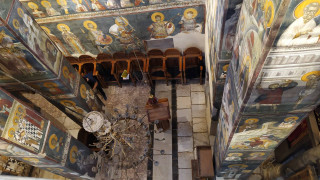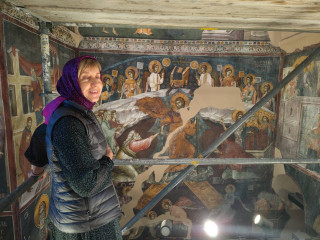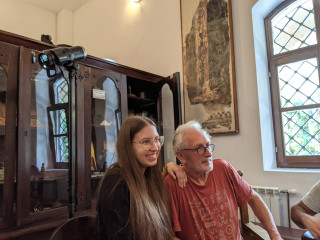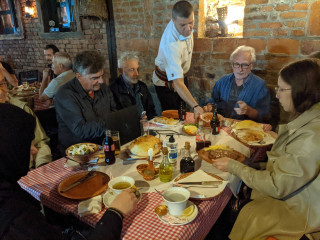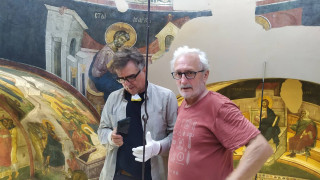BLAGO in Gračanica, 2021
Gračanica monastery, near Lipljan in Kosovo, is the last monumental foundation of King Stefan Milutin. Built on the ruins of the former Church of the Holy Virgin, the monastery was completed in 1321 and dedicated to the Annunciation of the Holy Virgin, subsequently re-dedicated to Her Dormition. On the western wall of the southeastern chapel, the king's charter is written, including the following words: "I have seen the ruins and the decay of the Holy Virgin's temple of Gračanica, the bishopric of Lipljan, so I have built it from the ground and painted and decorated it both within and without".
When the BLAGO Team was in Gračanica in June of 2003, we created the first digital collection of the monastery, documenting the architecture and interior decoration of the church in its entirety.
At the time, digital photography was still in its inception, and the importance of the monastery in Serbian heritage and culture warranted another expedition with the latest photo and video cameras, 3D cameras, and drones. Also, the recent cleaning of the frescoes (completed in 2018) provided an additional impetus for creating a new collection that would more faithfully display the work of painters from the famous family of Astrapa from Thessaloniki employed in the painting of the Gračanica church.
Our team went again to Gračanica at the beginning of September 2021, this time joined by our colleagues, art historians from the Serbian Academy of Art and Science and the Institute for the Protection of Cultural Monuments of Serbia, professor Dragan Vojvodić and Aleksandra Davidov Temerinski, conservator- researcher, adviser.
In addition to Gračanica, our goal was also to make collections of the cluster of churches located in the area of the Šara mountain, Sredačka and Sirnićka Župa, and the isolated church of Crkolez. More will be said about this part of our expedition in a separate report.
As always, with the blessing of Bishop Teodosije, our hosts and partners in this endeavor were Monastery Gračanica, with abbess Teodora, Monastery Sušica, with abbess Irina, Monastery of Holy Archangels, with abbot Mihajlo, as well as numerous church caretakers throughout the Kosovo & Metohija.
Our trip to Gračanica on Aug 31st was uneventful, except for the administrative border crossing, where the amount of equipment we were bringing in raised the eyebrows of the customs officials. Fortunately, all went well, and we arrived in Gračanica around four in the afternoon. The number of COVID infections is rising due to many people working abroad coming in and spending their summer in Kosovo. We faced some new measures regarding masking and curfew in the evening, which prevented us from working late and possibly overnight.
Because of the pandemic, we accommodated most of the team in a recently built Ethno Konak. Being walking distance from the monastery, made it an ideal location, while Nenad and Jelena stayed with an old friend, Abess Irina, at Monastery Sušica, near Gračanica.
Working in the monastery means having to adjust to the service schedule. The morning service starts at 7 am, and the evening prayer is at 6 pm. The nuns, some of whom we already knew from the previous visit, were very forthcoming in letting us have the church in between and later in the evening. Some coordination with the services was required once we brought in the extensive scaffolding for the central dome of the church.
Everyone was early for day one of the work. After the morning liturgy, we met our old friends, curators of Gračanica, Boban and Tiron, who were an enormous help in making things happen around the church and monastery. A corner of the external narthex is cordoned off for the equipment storage, charging stations are set up, and a plan was made for the day. Our photographers, Branko and Zoran, immediately started the work on the exterior of the church and the lower zones of frescoes in the interior. Bishop Teodosije was kind enough to transfer the scaffolding from Monastery Dečani, which we used in the afternoon to complete the collection of photographs of the external narthex.
On the other side, our chief construction engineer Ljubomir (Meda) Medenica, got busy preparing the scaffolding for the next day and scheduling the setting up of a larger one for the dome. With the help from the local contractors, we found a firm in Priština from which we could rent and arrange the installation of two scaffolding. As the weather was nice, we could also fly the drone and record Gračanica's courtyard and surroundings.
Early in the morning on the second day, a smaller scaffolding was brought in and installed. This one only went up to 8 meters (24 feet) and helped us record in the higher zones of the central, south, and north parts of the church. It also had wheels and it was narrow enough to be pushed into the north and south side corridors to access the small Gračanica domes. However, even this one required a teardown and build-up of higher levels due to architectural obstacles. Our two local teenagers, Aleksandar and Predrag, were of enormous help in getting things done, mounting and dismounting equipment, and bringing it up and down.
Photographers working that day, Branko Jovanović and Nenad Vukićević, took turns on the scaffolding, while Professor Vojvodić is always there, making sure, together with Danica, a graduate of the Faculty of architecture, that we document every scene and individual figure and that we do not miss anything. Around noontime, the second part of our team from the Institute for the Protection of Cultural Monuments of Serbia arrives- Aleksandra Davidov Temerinski, art historian, author of the exhibition on Gračanica, which will be held in the Gallery of SASA next year, with her collaborators: Zoran Mirčetić, professional photographer, a great asset for this trip, and Borjana Šuvaković, designer and architect, who assessed and prepared material for the exhibition.
At the end of the day, we are ready for the small dome on the church's southwest corner. It is challenging as the access is narrow, and we cannot build the scaffolding to the top. We brought a special extensible poll, mounted camera and lights, and inserted the camera into the dome. The recording went slower, but once we got into the rhythm, we could complete it all before the vespers.
The following two days were challenging as our team had to split. Nenad and Zoran headed south to Prizren and met with another group of scholars. For the next two days, they would record fifteen churches in villages on the foothills of the Šara mountain. More on their trip will be said in our next post. Branko Jovanović and Zoran Mirčetić continued working with the rest of the team to record the central part of the Gračanica church.
VISIT TO NOVO BRDO AND PRIZREN
Sunday was a day of rest, and our team decided to visit Novo Brdo fortification and St Nicholas Cathedral in its vicinity.
Together with Abess Irina, Jelena and Nenad visited St Nicholas cathedral, where prayers were offered. They also used this opportunity to take photographs and make some drone footage.Novo Brdo was an important Serbian mining town in the Middle Ages of a very cosmopolitan character, as it was not only inhabited by Serbs, but also by Saxon miners, merchants from Dubrovnik, Albanians, Greeks, and later Jews and Turks. The fortification was built in the first years of the reign of King Stefan Milutin (1282—1321), and it continued to be an important center during the time of the Serbian Despotate.
Toward the middle of the 15th century, the town was conquered by the Turks who devastated it. The churches, both Orthodox and Roman Catholic, were destroyed, while the cathedral of Saint Nicholas was converted into a mosque. Although archaeological evidence, as well as historical sources, confirm that the cathedral was Serbian Orthodox, currently it is being presented and planned for reconstruction as a Catholic three-nave basilica by the Archaeological Institute of Kosovo supported by the German Embassy in Priština.
INTO THE DOME
Monday was a big day as the new extensive scaffolding was installed in the morning. We occupied the whole nave of the church; however, the nuns managed to carry on their vespers and matins the next day. While Meda was working with the crew, Dragan and Nenad completed the small dome in the northwestern part of the church. Again, we used the extensible poll and remote shooting as the small dome is not accessible (we can only imagine how it was for the artists who painted them). Scaffolding for the central dome was not movable, and it was sturdy enough for other team members to reach the top and enjoy the view of the frescos in higher zones. As we reached the base of the dome, we could take all the pictures we needed.
AND THE LAST DAY
As we were dismantling the scaffolding, layer by layer from the top, we took pictures of the surrounding frescoes. It seems amazing how much attention to detail the painters gave to the areas that were not as easily accessible to the eyes of the viewers on the ground. At the end of the day, we were tired but happy at the same time as the significant and most challenging parts of the project got completed.
Work on the last day was shorter than usual as we needed time to pack the equipment and all the personal belongings from the hotel. Impressions from yet another stay in Kosovo will forever be with us. In the next several months, we will devote our time to processing the material we collected and preparing for the next visit that will allow us to make our collection of Gračanica complete.


